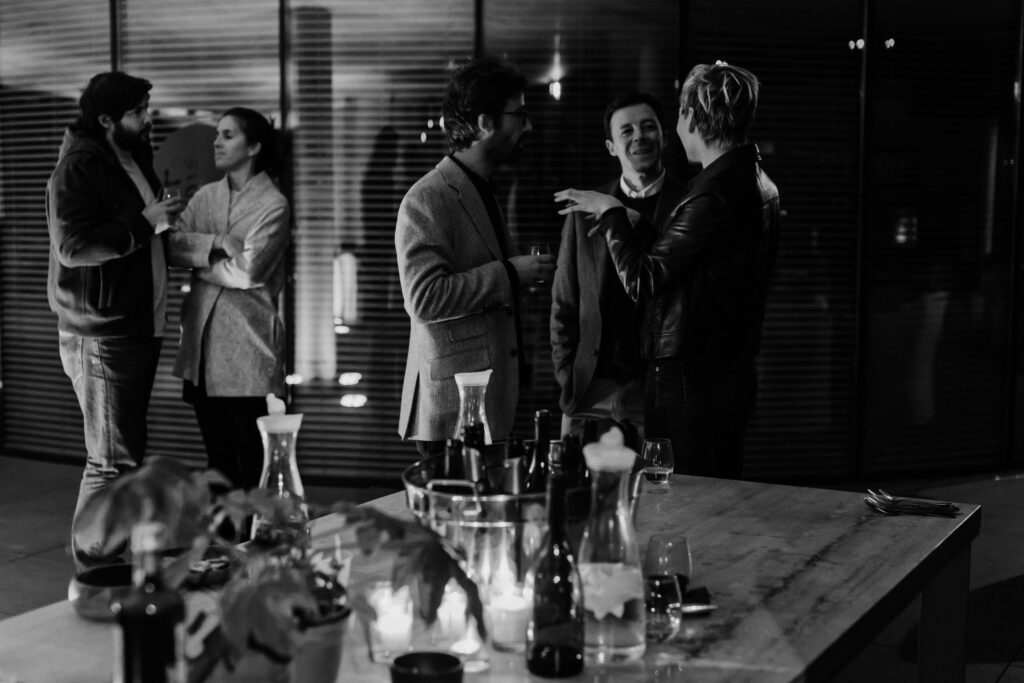By Spela Majcen Marusic, Communications Manager
“To really engineer solutions, we have to understand what drives people, and their behaviour” comments Dr. Baba Shiv, The Sanwa Bank, Limited, Professor of Marketing at the Stanford Graduate School of Business during the closing lecture of the Aleph Executive Speaker Series.
Deep diving into the issues of neuroscience and related consumer behaviour opens up a black box deep within our brains. For a moment, let’s indulge in the exploration of some hidden mechanisms that can make or break decisions every step of the way, and get a glimpse into possibly the most complex structure in the world – our brain.
Go for chocolate cake
If salespeople and marketers understood what truly drives the consumer to click on that “purchase now” button, the advertising world would be a very dull place. And should leaders understand exactly what stimulates their employees, they’d be running an alarmingly uniformed organization.
“Marketing is a combination of science and art. Data helps to understand it, and art helps us create emotional connections and drive interest. It’s hard work.”
Jordi Fornies, Regional Director Emerging Markets APAC, Facebook
Every stimulus that comes into our brain, from fighting the urge to devour a tasty chocolate cake, to walking into a networking event, eventually results in response. The magic that happens in between these two end points is what Dr. Shiv calls “reflexive” and “reflective responses”. The former relates to our spontaneous reaction to the stimulus, and the latter rationalises it.
“The rational brain is not good at making rational decisions. It is good however at rationalising what the emotional brain has already decided to do.”
Dr. Baba Shiv
While the rational response would encourage us to reach for a healthy alternative in the form of a fruit salad, when overloaded with information, we will always choose the chocolate cake. Being constantly under an immense “cognitive load”, the thinking part of the brain becomes so overloaded with information, that we start to rely more and more on initial instinct when it comes to decision making.
Go for comfort
As humans, we’re wired to play it safe and look for stability and predictability in our everyday situations. However, this behaviour rarely leads to innovation and creativity. Thus, it is crucial for leaders to detect, distinguish and determine when to switch between these two mindsets: one instinctively avoiding risks (Type 1), and another that won’t miss out on an opportunity (Type 2).
As we walk into a networking reception, our brain experiences certain levels of stress. So what do we do? We look for familiar faces or even if just acquaintances, to wire our brain into its “comfort” mode. Familiarity ranks high on our comfort seeking tactics list, right next to setting up tried and trusted processes, seeking peer validation and even laughing.
“Laughter is one of the most powerful ways to alleviate stress and put the brain into the comfort mindset.”
Dr. Baba Shiv
Once we feel settled and relaxed, then we can start meeting new people and building new connections, which is why we came to the event in the first place. We can only enter into the exploratory mode (Type 2 mindset) once we have reached a certain threshold of comfort, giving the brain the sense of security it needs.

Context determines the type of mindset that will prevail when a specific individual encounters another. This can range from neurochemical factors, to past experiences, as well as social norms and values.
But if we manage to understand what type of mentality we are wired towards in a specific setup, and what type our interlocutors are in, a competitive advantage arises for us to push our ideas through as we seek ways to help ourselves and others to become more open to new ideas, solutions or products.
Go for relaxation
Strong leaders should be able to switch between risk averse and risk tolerant mindsets depending on the context. And while we cannot control everything, there are certain interventions that can help us make the most of our neurological state at any given moment.
Age and time of day are two factors which we cannot control, but importantly impact the way people’s mindsets are wired.
Serotonin levels start to decline radically in people over the age of 50, thus subconsciously shifting their mindsets to become more risk averse. Considering that many organizations’ decision-makers are in that age group, focussing on reassurance, familiarity and validation in your arguments might be that missing piece of the puzzle that will keep them hooked on your innovative idea.
Similarly, afternoon meetings might also have people low on serotonin as it declines throughout the day, thus requiring you to put extra effort into building a safe and comfortable environment, before pitching a daring idea.
“By applying the principle of not checking your emails for the first 30 minutes in the morning, thus avoiding the immediate wiring of the brain towards a low-risk mindset, organizational productivity increases dramatically.”
Dr. Baba Shiv
However, there are a number of factors over which we do have control, and should be exercising.

Research has shown that the brain becomes more resilient to stress if we do things that relax us. Similarly, taking care of our bodies is just as important. The stronger our parasympathetic system, the longer it takes us to switch on our flight-fight response, and start stressing.
Power naps, siestas, yoga, meditation and laughter, coupled with good sleep hygiene, regular physical activity and a balanced diet are those interventions that can drastically help to raise our stress response thresholds.
Go long-term
While it may be almost impossible to make conscious decisions at all times, a number of techniques can be leveraged to optimize our reflexive response systems.
Simply by detecting stress factors and taking a moment of composure for ourselves, or even laughing out loud, we unlock the ability to switch between our risk averse and risk tolerant mindsets in a difficult situation, meeting or pitch.
Although our brain may be wired to focus on the negative experiences, we have the power to rewire it. An evening of reflection of the day’s ups and downs with time spent reframing the downs, from failures to lessons, is an important technique that can guide us to another successful day.
After all, our brain is a work in progress, we learn and develop it every single day. To thrive it needs patience, continuous care and a constant reminder to always “put your own oxygen mask on first”, only then can you help the others around you.
